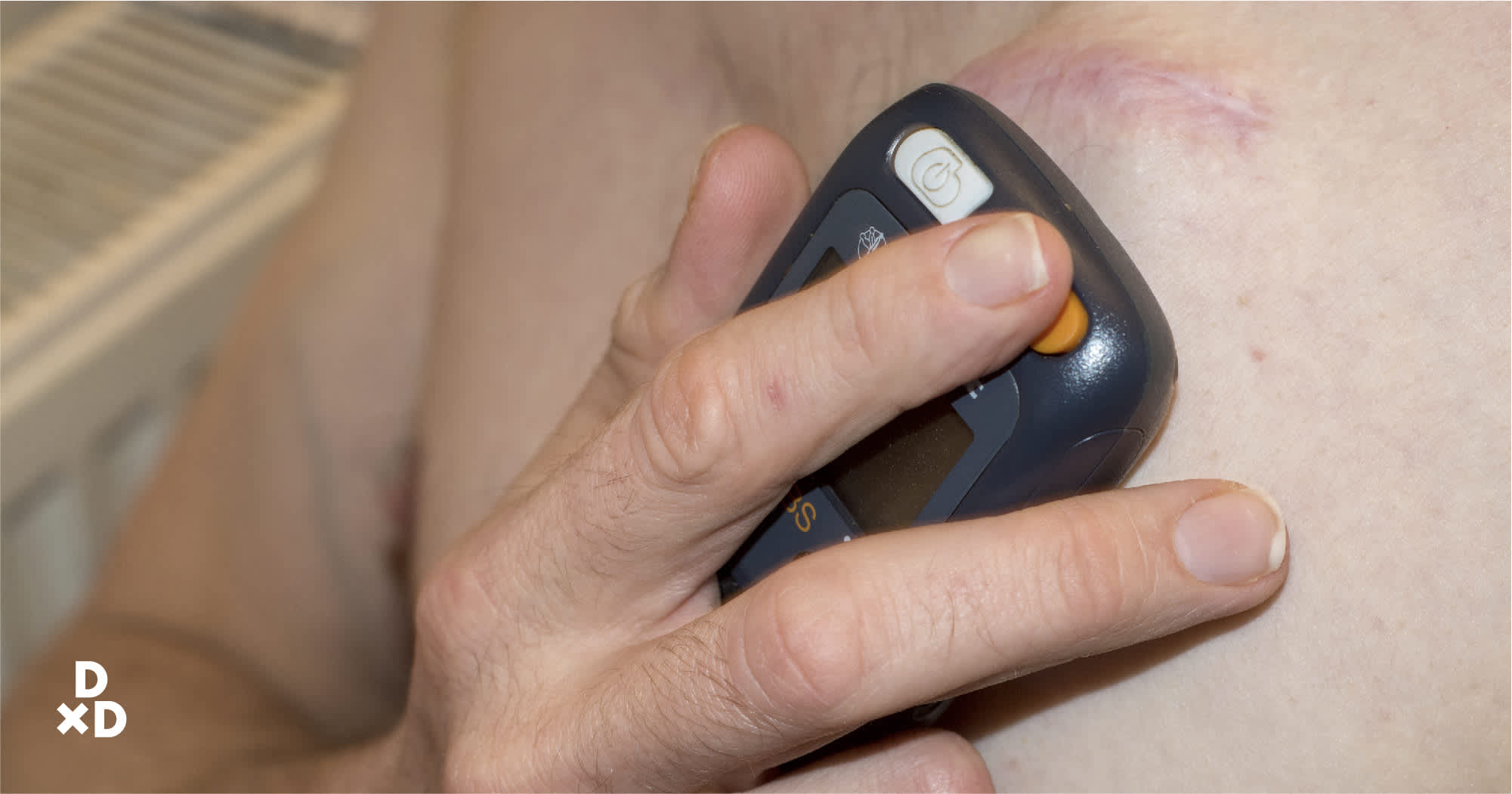Caring for a patient with Parkinson's disease is not an easy task. They can experience severe fluctuations in their symptoms. For some Parkinson disease patients in Singapore, you can help improve their symptoms and quality of life with a procedure called deep brain stimulation.
My experience as Neurosurgeon has allowed me to share some of my knowledge about this procedure.
Watch this video to find out more about Parkinson's and hear Elrica Tanu in her ongoing journey with the disease
What is Deep Brain Stimulation?
Deep brain stimulation is a surgery that involves implanting a stimulator device that can send electrical signals to the brain to affect the cells that trigger your body movements [1]. This surgery helps to treat a number of movement and psychiatric disorders such as [2]:
- Parkinson’s disease, a disorder that affects the patient’s central nervous system and affects the patient’s movement.
- Essential tremor, a disorder that causes uncontrollable rhythmic shaking.
- Dystonia, an involuntary contraction that causes the patient’s limb and body to move or twist repetitively.
- Epilepsy, a disorder that causes seizures.
- Obsessive-compulsive disorder (OCD), a disorder that causes the patient to have an obsession that leads to repetitive behaviour.
Who is Deep Brain Stimulation for?
Patients who go through deep brain stimulation are generally satisfied with the result and would recommend other patients to undergo the same procedure [3]. However, the success rate is highly dependent on the patients’ characteristics and the stage of their disease.
A patient with Parkinson's disease may be a suitable candidate for deep brain stimulation if [4]:
- You are sure that the patient has idiopathic Parkinson's disease, meaning that the cause of the disease is unknown.
- The patient is responding to levodopa medication, but the medication is starting to lose effect. This usually happens after about 4 years of being diagnosed with Parkinson's disease [5].
- The patient does not have underlying illnesses which may make them less suitable for any type of surgical procedure.
- The patient does not have other significant cognitive issues like dementia.
If a patient does not fit the above checklist, it does not necessarily mean that he or she is not suitable for DBS. Some of the conditions may be optimised prior to surgery.
Read this and find out the 5 Early Signs of Parkinson's Disease That You Need To Know!
What are the Advantages of Deep Brain Stimulation?
Some of the benefits of deep brain stimulation are: [6]
- DBS improves symptoms related to motor control, such as stiffness, slowness, and tremor.
- DBS is a minimally invasive procedure and is safer than older invasive surgical procedures that destroy tissue, which surgeons have largely stopped doing.
- DBS reduces the need for medication: For the majority of patients, a reduced dosage of levodopa will be needed after DBS, meaning that there is less of a likelihood of side effects (dyskinesia).
- DBS reduces dyskinesia, which is involuntary repetitive movement from excessive levels of levodopa.
Other points to take note:
- DBS is usually done as an awake procedure. However, it is also possible to be carried out under general anaesthesia. This is useful for patients who are unable to tolerate an awake surgery. You should discuss the best arrangement for you with your neurosurgeon.
- DBS is most useful to address movement-related symptoms that are treatable by levodopa. Although the treatment involves high upfront cost, DBS is known to have a sustained effect on reducing required levodopa medication over a long period of time. This means it is possible to achieve long term savings on medication cost with DBS.
Also read: What is the cut off age requirement for deep brain stimulation?

How is Deep Brain Stimulation surgery performed in Singapore?
Deep brain stimulation is typically performed as a two-stage procedure.
In the first stage:
- The patient will put on a headframe which acts as a “localiser” or “landmark”.
- A CT scan will be obtained while the patient is wearing the headframe.
- The CT scan will then be fused onto an MRI which was obtained prior to the surgery.
- The neurosurgeon will plan the surgical trajectory based on information extracted from the two scans.
- A small hole in the skull is made to allow the lead electrodes to go through and implant the device at the target location. The electrodes are typically inserted on both sides of the brain.
- In awake DBS, the patient will be asked to perform simple tasks in the operating theatre to evaluate the best target location to insert the electrodes.
In the second stage:
- The second stage is typically performed within 1-2 days of the first stage.
- One battery-operated pulse generator will be implanted under the skin and near the collarbone.
After surgery:
- The patient will return to the clinic to turn on the pulse generator. [7]
- The stimulation parameters will be configured based on symptoms response.
- Multiple sessions of adjustments within the next 3-6 months should be expected before the settings are optimised.
In some cases, the procedure is performed in one stage. Which means the electrodes and battery are implanted in the same session. You should discuss with your neurosurgeon to see which arrangement is best suited for you.
What is downtime after Deep Brain Stimulation?
Usually, the recovery time for deep brain stimulation varies from 2-3 weeks. During the recovery time, you have to keep an eye on complications that might occur, particularly wound infection [8].
Infection
Infection can occur if the wound is not taken care of properly. Tips on reducing the risks of infection include:
- Keeping the wound clean and dry
- Never scratching, moving, or putting pressure on the wound
- Washing hands thoroughly before handling the wound
- Returning to the doctor to follow up at a scheduled time.
In the event of infection, the doctor will prescribe a course of antibiotics. If the infection is unable to be resolved with antibiotics, the DBS system may have to be removed. Hence, I cannot emphasize enough the importance of proper wound care after surgery.
Mood changes
In some cases, patients can experience certain mood changes like low mood or elevated mood after the surgery. Both of these can happen. Therefore, you need to keep an eye on the changes.
Some of the signs of low mood which the patient may exhibit include:
- Being constantly sad.
- Excessive crying episodes.
- Not being in the mood to do normal activities.
- A change in appetite.
- A sudden change of sleeping pattern,
If these symptoms continue, tell the doctor immediately.
There are generally no lifestyle modifications required in the immediate period after surgery beyond monitoring for surgery-related complications.
Do I still need medication after the Deep Brain Stimulation procedure?

The need for levodopa medications is usually reduced but rarely eliminated, after DBS. Reduction in the dosage of levodopa or other medications is facilitated by the continuous stimulation from the battery.
This stimulation tricks the brain into thinking it is receiving a higher dosage of dopamine [9]. The extent of levodopa reduction after DBS will be advised by the neurologist or neurosurgeon.
What are the components of the deep brain stimulation device?
There are 3 components of the implanted deep brain stimulation device: [10]
1. Lead/Electrode
The lead is a thin wire that typically has 4 contacts attached to it. The electrodes are small tip-shaped devices that are implanted into the brain. The placement of the electrodes is dependent on the patient’s condition.
2. Neurostimulator
The neurostimulator uses a battery to produce electrical signals that are transmitted to the brain via the lead extension and electrodes. The neurostimulator is placed near the collarbone and is hidden underneath the patient’s skin.
The battery in the neurostimulator usually lasts three to five years. The procedure to replace the battery is usually done under general anaesthesia.
3. Extension
The extension is an insulated wire under the skin that connects the lead to the neurostimulator.

What if the battery of the device runs out?
You will feel when the battery is running low as the symptoms start to reappear. However, the battery power is checked at every clinic visit and can also be checked by the patient. This usually gives ample notice that the battery is starting to run out.
The battery change involves a simple surgical procedure at the chest area only.
When does Deep Brain Stimulation become the best option for a patient?
Deep brain stimulation becomes the best option if the patient’s symptoms are insufficiently well controlled by medication. This usually happens several years after the diagnosis. Deep brain stimulation also reduces the patient’s need for levodopa and fluctuations during the ‘on’ and ‘off’ period. [11]
The ‘on’ period is when the levodopa works optimally to improve the patient’s symptoms, and the ‘off’ period is when the drug does not improve the symptoms as well as it can. Such symptoms include motor symptoms (tremor and stiffness) and non-motor symptoms (anxiety) [12].
When symptoms are not well controlled, the patient experiences an increasing longer duration of ‘off’ periods.
Also read on the common concerns patients should consider before undergoing deep brain stimulation.
What are the complications after Deep Brain Stimulation?
When the battery depletes, a replacement will be required to continue enjoying the benefits of deep brain stimulation. Battery change involves a simple surgical procedure at the chest area only under general anaesthesia.
Deep brain stimulation is not a cure and does not stop the disease from progressing. As the disease progresses, symptoms will get worse and stimulation parameters will need to be adjusted to manage the symptoms as necessary.
Is there any insurance or Medisave coverage for Deep Brain Stimulation?
Deep brain stimulation surgery is a claimable procedure by insurance and Medisave. Check with your insurance company to find out if coverage applies.
Coverage by Singapore Ministry of Health with Medisave can be categorised as [13]:
- Deep Brain Stimulation, Bilateral: up to $7,550 is covered.
- Deep Brain Stimulation, Unilateral: up to $6,200 is covered.
- Neurostimulator, involving the insertion of Internal Pulse Generator (IPG) and requires wound opening, tunnelling, and a pouch opening for IPG and system testing: up to $2,600 is covered.

Conclusion
Even though deep brain stimulation is considered expensive, it is effective in saving money in the long run. Deep brain stimulation is also generally safe to use to improve the motor symptoms of Parkinson’s disease and reduce the need to take levodopa.
Make sure that the patient that you are caring for is suitable for this procedure to minimise the risk of complications that might occur. Do consult a trusted doctor if you have more questions regarding deep brain stimulation.
After completing medical school, Dr Kon continued his medical training in neurosurgery and neurocritical care at various institutes in the UK which include the National Hospital for Neurology and Neurosurgery (London), Charing Cross Hospital (London), Addenbrooke’s Hospital (Cambridge) as well as the National Neuroscience Institute (NNI) in Singapore.
He obtained his PhD at Imperial College London and subsequently completed his fellowship at Toronto Western Hospital, the University of Toronto in Canada.
You can find Dr Kon at NeuroAsiaCare










